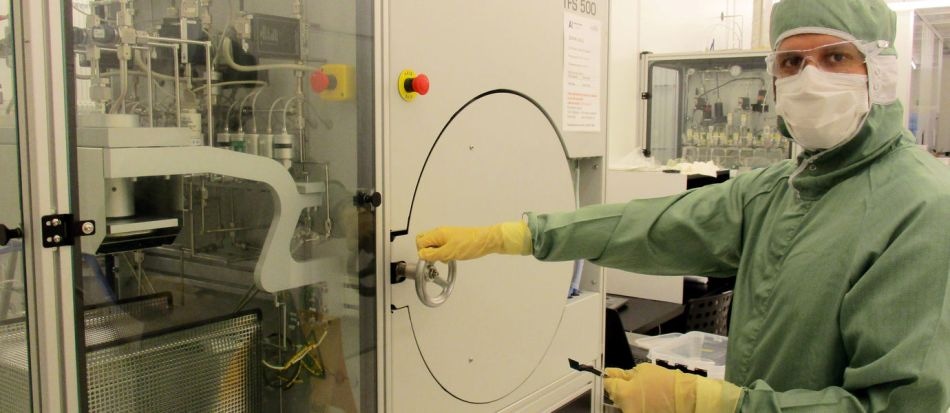Feb 6 2019
The propagation of data within a microchip has been considerably enhanced in a new study performed by an international research team from Aalto University and Université Paris-Sud.
 The researchers utilized the exceptional facilities of Micronova Nanofabrication Cleanroom. (Image credit: Antti Matikainen)
The researchers utilized the exceptional facilities of Micronova Nanofabrication Cleanroom. (Image credit: Antti Matikainen)
Compared to electricity, light offers a faster and more energy-efficient way to transfer data. Due to the fast attenuation of light signals in microchips, light could not be used as a source of an information signal, until now.
Through an international collaboration, Aalto University scientists have created a nanosized amplifier to enable the propagation of light signals via microchips. The researchers have published the results of their study in Nature Communications, demonstrating that when data is transferred within a microchip, for instance, from processor to processor, signal attenuation can be considerably decreased.
Photonics, or light transfer that is already widely used in internet connections, is increasingly being used by microcircuit systems because light is a more energy efficient and faster way of transferring data than electricity. The increase in information also requires an increase in performance. Boosting performance through electronic methods is getting to be very difficult, which is why we’re looking towards photonics for answers.
John Rönn, Doctoral Candidate, Aalto University.
Help from atomic layer deposition
The investigators used a Finnish invention—the atomic layer deposition technique— to make their recent breakthrough. According to them, this technique is perfect for processing different types of microcircuits, as it has an integral role to play in producing today’s generation of microprocessors.
Thus far, the atomic layer deposition technique has been chiefly utilized in electronic applications; however, the recently released study shows that photonics is another potential field where this method can be applied. When it comes to the development of photonics, novel components should also perfectly work with electricity—to be precise, in electronics.
Silicon is a key material in electronics, and that’s why it’s also included in our light amplifiers together with the amplification element erbium. Today’s compound semiconductors, which are used, for instance, in LED technology, can also be used effectively in light amplification. That being said, most compound semiconductors are not compatible with silicon, which is a problem for mass production.
John Rönn, Doctoral Candidate, Aalto University.
The new study demonstrated that a light signal can possibly be increased in all types of structures and that a microchip’s structure is not restricted to a certain type. The outcomes indicate that atomic layer deposition is a potential technique for creating microchip photonic processes.
Our international collaboration made a breakthrough with one component: a nanosized amplifier. The amplification that we got was very significant. But we’ll still need more components before light can completely replace electricity in data transfer systems. The first possible applications are in nanolasers, and in sending and amplifying data.
Zhipei Sun, Professor, Aalto University.
The study has been published in the journal Nature Communications on January 25th, 2019.